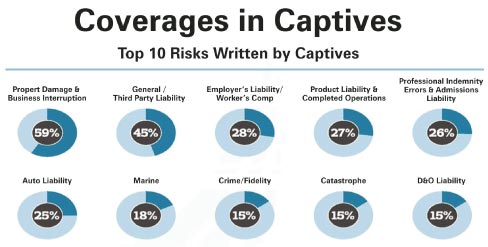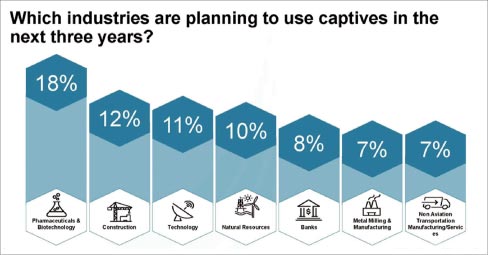Don’t Miss the Boat on Owning Your Own Insurance Company
Randy Sadler
Principal, CIC Services LLC
It’s quite disconcerting to “miss the boat,” so to speak. And, this adage is particularly true for many mid-market and small construction companies and manufacturers that would benefit immensely from owning their own insurance company – known as a Captive Insurance Company (CIC) – but have yet to embark on this powerful course to improve risk management and boost profits.
 |
 |
CIC Services recently attended the Risk Management Society (RIMS) Conference in Philadelphia, Pennsylvania. The conference included a presentation on trends in the captive insurance industry, including the two charts shown. The charts were part of Aon’s Global Benchmarking Survey.
The captive insurance industry has been experiencing steady growth, and there are now almost 7,000 CICs worldwide.
CICs form the backbone of many alternative risk transfer and financing programs. CIC programs are inherently designed to turn risk management into a profit center (or wealth center) or to forego those profits to lower insurance costs.
Aon’s Global Benchmarking Survey outlines the Top 10 Risks written by CICs. Many of these insurance coverages are broad or appear to be tailored to address uncertainty and emerging risks. Importantly, many of these insurance coverages are relevant to construction and manufacturing, including property, business interruption, general liability, employer’s liability, product liability, crime and catastrophe.
The next chart from the Aon Global Benchmarking Study focuses on Businesses Planning To Form A CIC In The Near Future. Note that Construction is second on the list and Manufacturing makes the list twice. According to Aon, a larger percentage of companies in these industries are expected to take the initiative to take more control of their risk management, reap insurance profits and reduce tax impact by forming their own Captive Insurance Companies.
The theme of the 2017 RIMS Conference – DEFYING DISRUPTION – suggests that more and more companies will look to alternative risk transfer programs (like CICs) to address the complexity of the 21st century. CICs provide businesses with a tax-favored vehicle to amass reserves to finance their alternative risk management strategies. After all, defying disruption will require sophisticated, creative, forward looking and financially savvy approaches to risk management. Captives are up to this task, and for many Construction and Manufacturing businesses defiance is in their DNA.